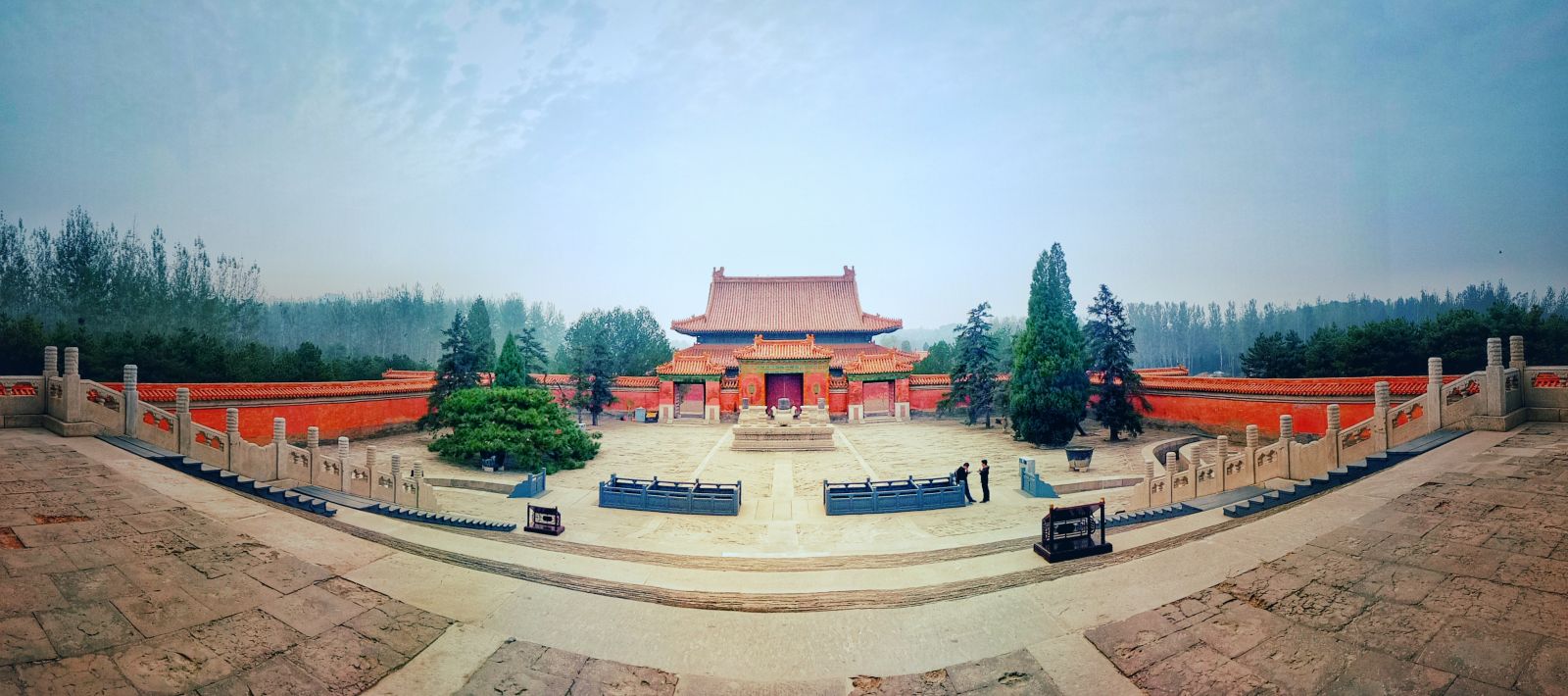Chinese Name: 清西陵 Pronunciation: Qīng Xī Líng
Building Time: 1730
Recommended Time for Visit: 3-5 Hours
Occupied Area: 800 square kilometers
Address: Yongning Mountain, Yi County, Baoding City, Hebei Province
Best Visiting Season: Spring, Summer, and Autumn (April to October)
Building Function: The tomb of the four Emperors of the Qing Dynasty (1636-1912)
Popular Activities: Local people and visitors coming to experience the history and admiring the architecture of the mausoleum.
| Ticket | Peak Season (April 1st to October 31st) |
Low Season (November 1st to March 31st) |
| Admission Fee | 108 yuan | 80 yuan |
| Tailing Ticket | 45 yuan | 35 yuan |
| Chongling Ticket | 45 yuan | 35 yuan |
| Changxiling Ticket | 20 yuan | 15 yuan |
| Muling Ticket | 10 yuan | |
| Yongfu Temple Ticket | 15 yuan | |
1. Elderly people over 70 years and children under 1.2 meters will receive free tickets at the ticket office of the scenic spot with their valid certificates.
2. People aged 60-70 years old enjoy the half-price discount policy of the scenic spot with their valid certificates.
| Attraction Gate | Peak Season (April 1st to October 31st) |
Low Season (November 1st to March 31st) |
| Opening Hours | 8:00-17:30 | 8:30-17:00 |
| Ticket Office Opening Hours | 8:00-17:30 | 8:30-17:00 |
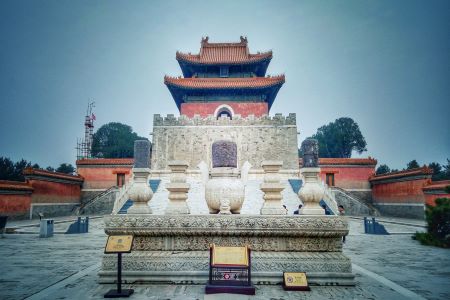
The Western Qing Tombs is located in Yongning Mountain of Yi County, Baoding City, Hebei Province, 98 kilometers southwest of Beijing, and was the last imperial tomb complex of the Qing Dynasty. Four emperors of the Qing Dynasty, Yongzheng, Jiaqing, Daoguang, and Guangxu, as well as their relatives were buried here.
The Western Qing Tombs has 14 tombs with an area of 50,000 square meters, more than 1,000 palaces, and more than 100 stone sculptures and buildings. Many of the buildings are decorated with colored paintings and sculptures, with the carvings of dragons and phoenixes being the most numerous. The entire complex reflects the high level of architectural art of the Qing Dynasty.
The Western Qing Tombs is of high historical and artistic value, with a complete range of tomb buildings, whose location, design, and construction were strictly guided by the ancient Chinese theory of geomancy. The tombs are surrounded by beautiful mountains and clear rivers, integrated with the splendid ancient buildings built on the hills. They are majestic, magnificent, and elegant with pines and cypresses.
In 1730, Emperor Yongzheng selected the site for his mausoleum and the construction began.
In 1796, the construction of Emperor Jiaqing’s mausoleum began the year after he ascended the throne, and it was completed in 1803.
A two-year overhaul (1808-1810) of Changling was undertaken due to problems of some of the tomb’s buildings.
From 1832 to 1836, Emperor Daoguang built Muling.
In 1909, the construction of Chongling began and was completed in 1915.
In 1938, Chongling’s underground palace was stolen.
After the founding of the People’s Republic of China, the government conducted the maintenance and protection of the tombs, based on the principle of “not changing the original state” (i.e., making the utmost effort to preserve the authenticity of cultural relics).
In 1980, the Western Qing Tombs was officially opened to the public.
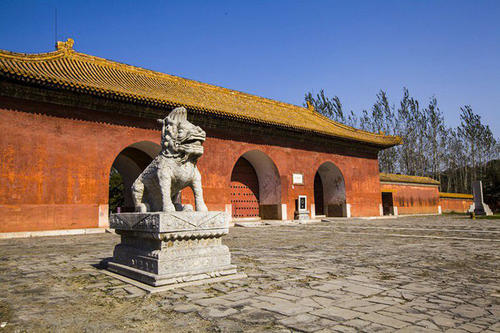
Tailing is the mausoleum of Emperor Yongzheng, built between 1730 and 1736, and is the first mausoleum in the Western Qing Tombs, in which Emperor Yongzheng and his two concubines are buried. Emperor Yongzheng, known as Yin Zhen, reigned for 13 years (1723-1735) and made many important reforms during his reign, which contributed to the development of the Qing Dynasty and was a very successful ancient emperor in Chinese history.
As the first mausoleum of the Western Qing Tombs, Tailing is the largest and the most complete in terms of Fengshui pattern. It was built along a 2,500-meter-long sacred road as the central axis, with 74 single buildings including a large red gate and stone statues. The location and layout of Tailing reflect the prosperity and stability of the country during Yongzheng’s reign and the product of the last glorious era of China’s feudal dynasty.

Changxiling was built in 1851 and completed in 1852. It was the mausoleum of the Empress of Emperor Jiaqing(1796-1820) of the Qing Dynasty and was one of the three Empress mausoleums in the Western Qing Tombs.
The tomb is rich in colored paintings. The carving of a golden phoenix in the tomb is exquisite and lifelike as the emperor was compared to a dragon and the empress to a phoenix in ancient China. Changxiling is also home to a magical echo wall and echoed stone, which, although not well known, has an echo effect comparable to that of the Temple of Heaven in Beijing, and has been well preserved.
Although the architecture of Changxiling is relatively simple and plain in style, its architectural features are unique, reflecting the profoundness of ancient Chinese culture.
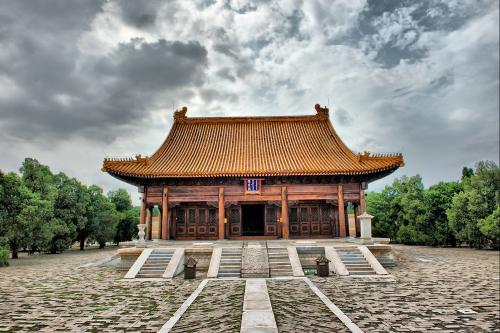
Mulling is the mausoleum of Daoguang Emperor, the eighth emperor of the Qing Dynasty.
The nanmu(a precious wood) carvings of temples in Muling were not limited to the production methods as colorful oil painting in other imperial tombs, but waxed on the logs for ironing and coloring, coupled with thousands of nanmu carved dragon decorations, which were imposing and magnificent.
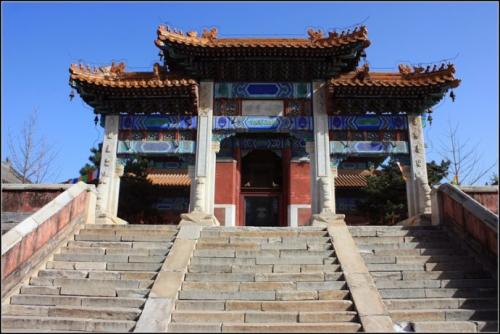
The Yongfu Temple is the only preserved imperial temple among the royal tombs of the Ming and Qing Dynasties. It was built in the spring of 1787. The temple was also called the Lama Temple due to the temple was presided over by Manchu lamas to recite Manchu scriptures. Ancient Chinese emperors constructed Lama Temples in their mausoleums as a specialized place in order to engage in mausoleum ritual activities. In this way, ancient Chinese emperors will consolidate the emperor’s feudal rule, and express fear and respect for the sky.
The entire temple is dedicated to the statues of Shakyamuni Buddha, Guanyin Buddha, and the Eighteen Arhats. While enjoying the scenery, visitors can also go here to pay homage to the Buddha and personally appreciate the significance of traditional Buddhist culture.
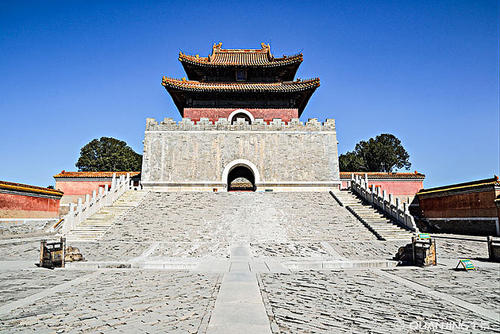
Chongling was built in 1909 and was the last feudal tomb of an emperor in China, where Emperor Guangxu and his Empress were buried.
The mausoleum is not as large as Tailing, but it incorporates the essence of modern building techniques, demonstrating unique architectural features. The Chongling Underground Palace is the only imperial palace open to the public in the Western Qing Tombs.
Many people have watched the TV series “Empresses in the Palace”, which is popular at home and abroad. There is the largest empress mausoleum to the east of Tailing, which is the tomb of Emperor Qianlong’s mother, Empress Xiaoshengxian.
Empress Xiaoshengxian was later promoted to the highest-ranking imperial concubine. Her only son, also the future Emperor Qianlong (originally named Hongli), was extremely filial to his mother and took her to travel dozens of times after becoming the emperor. After the death of his mother, Qianlong made great efforts to build this mausoleum for his mother, and he often came to the mausoleum to inspect the construction himself. As a son, his filial piety to his mother was very sincere.
Enter from South Gate→ Integrated Service Center and take bus No. 1→Tailing→ Chongling→ Yongfu Temple→ Go back to Tailing and take bus No. 2→ Changxiling→ Muling→ Exit from South Gate of the attraction
Take bus 681 or 981 from the Baoding Passenger Transportation Center and get off at Yi County Station, and take shuttle 9 from Yi County and get off at the Integrated Service Center(Ticket Office) of the Western Qing Tombs.
Chinese: 请带我去清西陵的南门。English: Please take me to the South Gate of the Western Qing Tombs.
If you go to the Western Qing Tombs from the center of Baoding, Hebei Province (Xiulan Hotel), it takes about 1 hour and 40 minutes (200 yuan).
If you go to the Western Qing Tombs from Baoding Railway Station, it takes about 1 hour and 50 minutes (210 yuan).
If you go to the Western Qing Tombs from Baoding East Railway Station, it takes about 1 hour and 30 minutes (230 yuan).
